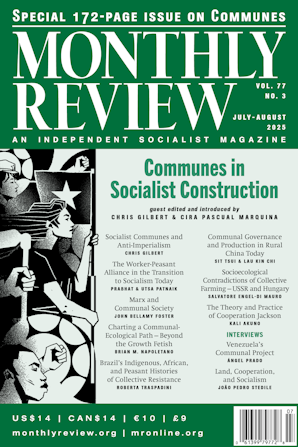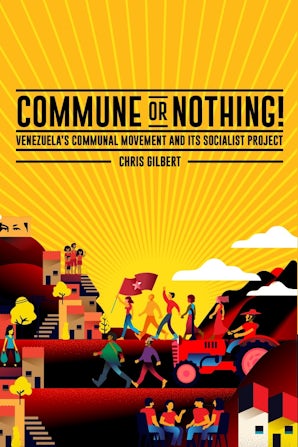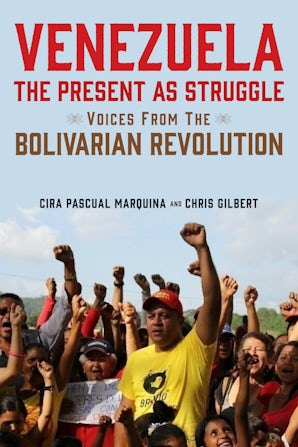Also in this issue
- Inside a People's Commune: Report from Chiliying (Excerpt)
- Communal Governance and Production in Rural China Today
- Socioecological Contradictions in the Development of Socialist Collective Farming: Drawing from USSR and Hungarian Histories
- Popular Power in Brazil: What Can We Learn from Indigenous, African, and Peasant Histories of Collective Resistance?
- Charting a Communal-Ecological Path: Beyond the Growth Fetish
- Marx and Communal Society
- The Worker-Peasant Alliance in the Transition to Socialism Today
- Socialist Communes and Anti-Imperialism: The Marxist Approach
- Venezuela's Communal Project
- A Special Issue on Communes in Socialist Construction
- July-August 2025 (Volume 77, Number 3)
Books by Chris Gilbert
Commune or Nothing!
by Chris Gilbert
Venezuela, the Present as Struggle
by Cira Pascual Marquina and Chris Gilbert
Article by Chris Gilbert
- Socialist Communes and Anti-Imperialism: The Marxist Approach
- A Special Issue on Communes in Socialist Construction
- Venezuela's Communal Project
- The Dream of a Thing: Refounding the Economy of a Venezuelan Commune
- Where Danger LiesÉ: The Communal Alternative in Venezuela
- Luisa Cáceres: Commune-Building in Urban Venezuela
- We Only Have One PlanetÑDefending It Will Require Collective Measures
- Mészáros and Chávez: The Philosopher and the Llanero
- A Commune Called 'Che': A Socialist Holdout in the Venezuelan Andes



